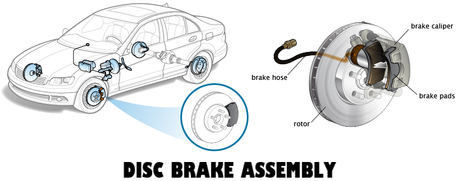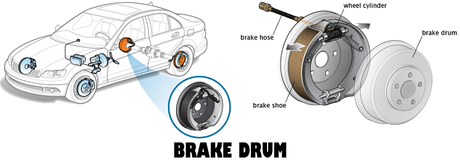If it is one of the front brakes which are dragging then the front brake caliper is stuck or its piston is seized.
As indicated, the dragging brake is in the front. Like nearly all cars, the car has disc brakes on the front wheels. Now, a disc brake unit has something called a caliper which "squeezes" the brake pads against the disc. This caliper must move freely on its support bracket in order for it to work properly. The support bracket can become corroded causing the caliper not to open (i.e. become stuck) after the brake pedal has been released; this means the brake will drag. Also, a brake caliper has a piston inside it which hydraulically causes the caliper's "squeezing" action. If this piston becomes seized, the caliper will not open. As in the previous situation, this also means the brake will drag.

What to do?
Take the car to a reputable repair shop (AAA approved garages are highly recommended) and ask the mechanic to inspect the front brake unit which doesn't seem to be fully releasing. If you're lucky, a corroded support bracket will be the cause. This will only mean cleaning the bracket with a wire brush and then coating it with a suitable lubricant (i.e. inexpensive). However, if the support bracket looks good and is free of corrosion, the caliper's piston could be seized. If this is the case, you'll have to replace not only that caliper but the other front brake caliper as well since both calipers must match in every sense or else the vehicle may pull when braking.
But if it's not one of the front brakes which is dragging then shoe retracting springs broken key or cylinder piston stuck. The car has drum brakes on the rear wheels. A drum brake has cylinder pistons which, when the brake pedal is depressed, force the brake shoes against the inside of the drum. The contact between the shoes and drum help stop the car. When the brake pedal is released, the retracting springs pull the brake shoes away from the drum.

Now, if either one or more retracting springs is broken other than the cylinder piston is stuck, the shoes can remain in contact with the drum and hence, the brake will drag.
What to do?
Take the car to a reputable repair facility and ask the mechanic to inspect the rear brake unit which does not seem to be fully releasing. Once the mechanic removes the drum, you'll be able to see for yourself if one or more retracting springs are broken. If the springs look fine, a wheel cylinder piston is likely stuck. In this case, you will need to have the faulty wheel cylinder either rebuilt or replaced.
